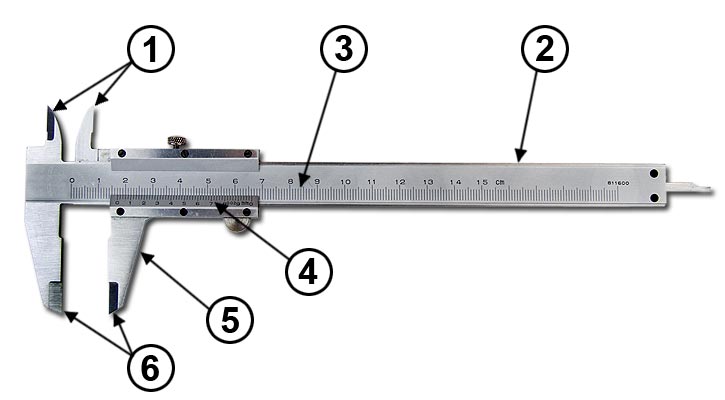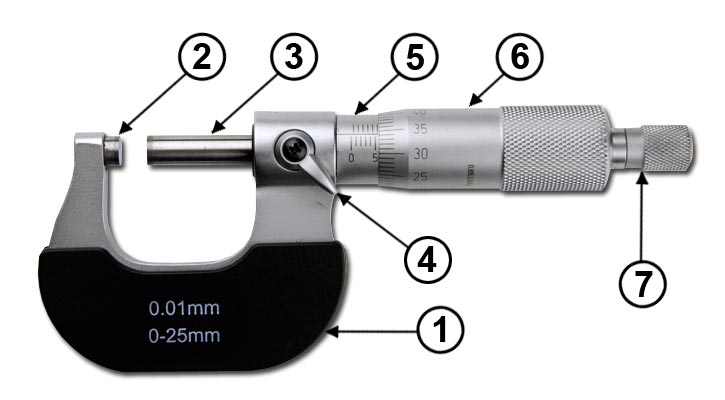Measurement & marking out
Low tolerance
Low tolerance measurement refers to measuring very accurately to within 0.01mm. These types of measurements may be required for measuring sizes of conductors, measuring bearings and shafts for an electric motor, or measuring circuit board drill bits. Two common tools that are used for low tolerance measuring are:
- vernier calliper
- micrometer.
Vernier callipers
Vernier callipers use a sliding scale for taking measurements. The one tool can be used for internal and external measurement and has a much larger measurement range than a micrometer, eg a standard vernier calliper, like the one pictured, can measure up to 15cm. However the vernier calliper cannot measure to the same tolerance as a micrometer (0.02mm) and requires more skill by the user to obtain accuracy.

Parts of the vernier calliper
Parts of the vernier calliper
- Inside jaws
- Frame
- Main scale
- Vernier scale
- Sliding jaw
- Outside jaws.
Micrometers
The micrometer consists of a threaded spindle and thimble with associated graduated scales . The type shown is for measuring:
- outside diameters
- thickness of material
- lengths of parts.
Micrometers are available in various frame sizes. All sizes, however, have a measuring range limited to the length of the thread on the spindle which is 25mm. Micrometers are also available for measuring inside diameters.
The micrometer in the photo below has 0 to 25mm range and 0.01mm accuracy.

Parts of the micrometer
Parts of the micrometer
- Frame
- Fixed anvil
- Spindle
- Locking lever
- Sleeve
- Thimble
- Ratchet.



